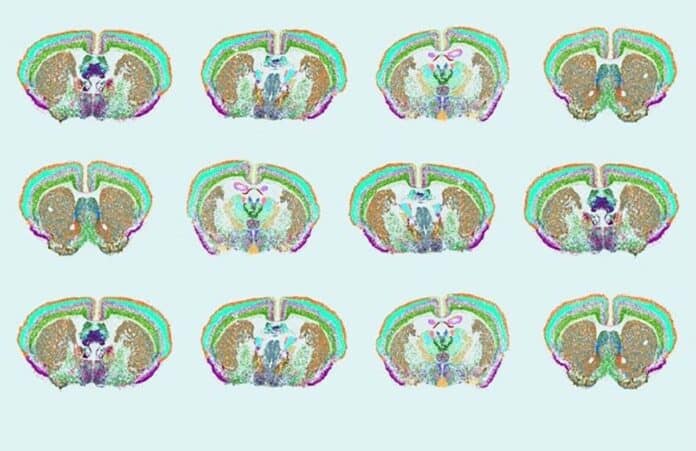The mammalian brain is very complex and controls many things, like breathing, sleeping, thinking, and feeling. This happens through special networks of cells in the brain, each with its characteristics. To understand how the brain works, we need to know much about these different types of cells and how they are connected to the brain’s structure. This helps us figure out how all the brain’s other functions come together.
An international team of scientists made history by creating a detailed map of an entire mammalian brain, precisely that of a mouse. This atlas is like a guide, showing the different types of cells, where they are in the brain, and details about them at a molecular level. It’s an extensive map covering over 32 million cells and also tells us how they are connected.
According to scientists, this achievement is a big step in understanding the complexities of the brain. It also lays the foundation for the development of a new generation of precision therapeutics for people with mental and neurological disorders of the brain.
The cell atlas tells us about the types of cells in different parts of the mouse brain and how they are organized and gives us an incredibly detailed list of the cell’s transcriptome. This transcriptome is like a set of instructions that tells the cell how to make proteins and other essential things. The information in the atlas is structured, detailing various cell classes, subclasses, and thousands of individual cell clusters in the brain.
Moreover, the atlas provides information about the cell epigenome. This means it tells us about chemical changes in a cell’s DNA and chromosomes that affect how the cell’s genetic information is used. The atlas details thousands of different epigenomic cell types and millions of potential genetic regulation elements for various brain cell types.
The atlas combines information about the structure, transcriptome (gene readouts), and epigenome (chemical changes in DNA) to create a fantastic map of how cells are organized and how diverse they are in the mouse brain. It also tells us about the neurotransmitters and neuropeptides used by different cells and how these cell types are connected within the brain.
This detailed information acts like a blueprint, showing how chemical signals start and move through different brain parts. Understanding these signals is crucial as they form the basis for how brain circuits work and, ultimately, how the entire brain functions.
John Ngai, Ph.D. , Director of the NIH BRAIN Initiative said, “This product is a testament to the power of this unprecedented, cross-cutting collaboration and paves our path for more precision brain treatments.”
“By leveraging the unique nature of its multi-disciplinary and international collaboration, we were able to accomplish what no other team of scientists has been able to before.”
“Now we are ready to take the next big step—completing the cell maps of the human brain and the nonhuman primate brain.”
Journal Reference:
- Yao, Z., van Velthoven, C.T.J., Kunst, M., et al. A high-resolution transcriptomic and spatial atlas of cell types in the whole mouse brain. Nature 624, 317–332 (2023). DOI: 10.1038/s41586-023-06812-z
